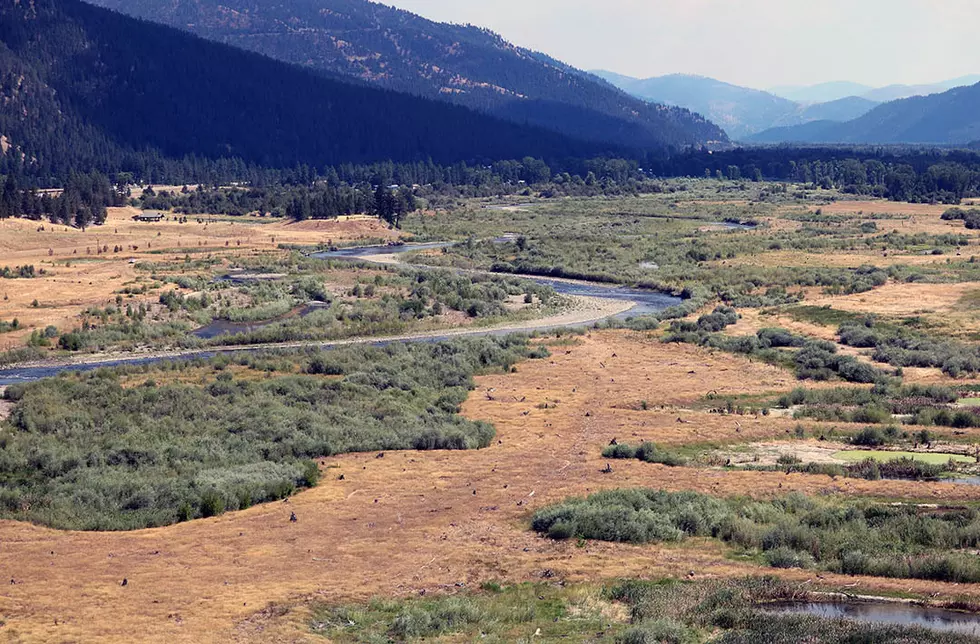
River advocates list Clark Fork among Top 10 endangered streams
Laura Lundquist
(Laura Lundquist) The Clark Fork River has earned the unfortunate distinction of being one of America’s 10 most endangered rivers, according to a national river organization.
On Tuesday, American Rivers announced that the Clark Fork River comes in at No. 5 among its 10 picks of the most endangered rivers in the nation, based on threats to human health and public safety.
“Healthy rivers are essential to human health and public safety. When rivers are sick,
people suffer,” said Tom Kiernan, American Rivers president and CEO in a release. “This report sounds the alarm. It is a national call to action to defend these rivers and all of the life they support.”
This is the 38th year that American Rivers has issued its report. The organization reviews nominations from local groups and individuals across the country and selects rivers based on three criteria: The river’s significance to people and wildlife; the magnitude of the threat to the river and communities, especially in light of climate change and environmental injustice; and whether there’s a pending decision in the next 12 months that the public could influence.
American Rivers chose the Clark Fork River because of industrial pollution that lingers since the Smurfit Stone pulp mill was closed in 2010. The toxins from the pulp process and electricity production - dioxins, furans and PCB’s - may be seeping into the river, affecting fish and wildlife.
Montana Fish, Wildlife & Parks has placed a fish consumption advisory for sections of the river around and downstream of the pulp mill site, which affects local anglers and subsistence fishermen of the Salish and Kalispel people, many of whom live on the Flathead Reservation.
“The Clark Fork River is in the heart of our ancestral homelands, but it's like being punched in the gut when you have something like Smurfit in that location. We want to restore the floodplain, reclaim lost pieces of our culture, and honor our treaty and our ancestors,” said Tom McDonald, Council Chairman for the Confederated Salish and Kootenai Tribes in a release.
The Environmental Protection Agency has been slogging through the federal clean-up process for almost a decade but encountered some setbacks and has been reluctant to do more than the minimum sampling to justify a limited cleanup.
Should the river flood and breach the berms, more toxins would definitely be swept into the river. This could have major implications for anglers and communities who depend on the river for irrigation and drinking water.
“One of the biggest environmental concerns we have is that there will be a 100-year, 300-year, or 500-year flood that will take out the berms and potentially create a colossal catastrophic environmental nightmare in the Clark Fork drainage and watershed,” said Missoula County Commissioner Dave Strohmaier. “Right now, the berms are the only line of defense that keeps the Clark Fork River under extreme flood conditions from scouring out contaminants.”
As far as the criteria requiring a pending decision that the public could influence, American Rivers is calling on the EPA to direct International Paper and WestRock - the companies that now own the mill site - to clean up the roughly 140 acres of contaminated waste dumps. The agency should also conduct supplemental groundwater, soil, and wildlife exposure testing to better characterize the source and pathways of pollutants and develop a thorough and comprehensive cleanup that preserves a river and its floodplain.
The EPA has recently agreed to do more testing and started working with Missoula County and the Frenchtown Smurfit Stone Community Advisory Group in mid-March to develop a plan. EPA project manager Allie Archer has said the additional work would push the cleanup decision back to 2028.
“The Clark Fork Coalition and many others have worked hard to heal the scars of the Clark Fork River’s hardworking past, but a major wrench in recovery is the shuttered Smurfit-Stone mill,” said Karen Knudsen, Clark Fork Coalition executive director in a release. “Our community wants to do right by its river. It’s been 13 years since the Smurfit-Stone mill closed, and the time for cleanup is now.”
American Rivers considered the Clark Fork River to be facing slightly less threat than the Snake River, which is segmented by four federal dams; Mississippi’s Pearl River, which is threatened by dredging and dam construction; the Ohio River, which suffers from significant amounts of industrial pollution, most recently from the East Palestine train derailment; and the Colorado River, which continues to dwindle due to overuse and drought worsened by climate change.
In past reports, American Rivers has listed three other Montana rivers as endangered, including the Smith River in 2016 and 2018, the Middle Fork Flathead River in 2017 and the Kootenai River in 2013.
Contact reporter Laura Lundquist at lundquist@missoulacurrent.com.
